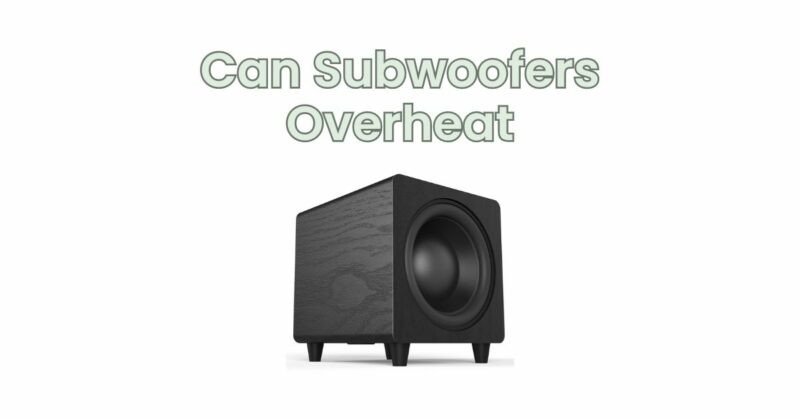Subwoofers play a vital role in delivering deep, low-frequency bass in audio systems. However, like any electronic device, subwoofers can generate heat during operation, which may raise concerns about overheating. In this article, we will explore the topic of subwoofer overheating, its potential causes, and practical tips to prevent it from occurring.
Understanding Subwoofer Heat: Subwoofers, especially those with built-in amplifiers, can generate heat during prolonged use. This heat is a natural byproduct of the power conversion and amplification processes. While it is normal for subwoofers to become warm during operation, excessive heat can lead to performance issues and, in some cases, damage the subwoofer components.
Causes of Subwoofer Overheating: Several factors can contribute to subwoofer overheating:
- Inadequate Ventilation: Poor ventilation around the subwoofer can impede heat dissipation, causing it to accumulate and potentially lead to overheating. Placing the subwoofer in an enclosed space or stacking objects on top of it can restrict airflow, leading to temperature buildup.
- Overdriving the Subwoofer: Pushing the subwoofer beyond its recommended power handling capacity or continuously playing it at maximum volume for extended periods can cause excessive heat generation and potentially damage the voice coil or other components.
- Insufficient Amplifier Power or Clipping: Underpowering the subwoofer or using an amplifier that cannot provide sufficient power to drive it properly can result in increased distortion and clipping. Clipping can cause the amplifier to work harder, generating more heat and potentially affecting the subwoofer’s performance.
- Inadequate Cooling Systems: Some subwoofers may have built-in cooling mechanisms such as heat sinks, fans, or vents to dissipate heat effectively. If these cooling systems are damaged or blocked, the subwoofer may experience overheating issues.
Preventing Subwoofer Overheating: To prevent subwoofer overheating and ensure its optimal performance, consider the following tips:
- Proper Ventilation: Ensure that the subwoofer has adequate space around it for airflow. Avoid placing it in enclosed spaces or stacking objects on top of it. If using a cabinet or enclosure, ensure it has sufficient ventilation to allow heat to dissipate.
- Match Amplifier Power: Use an amplifier that matches the power requirements of your subwoofer. Underpowering the subwoofer can cause the amplifier to work harder, leading to overheating issues. Conversely, overpowering the subwoofer can also be detrimental to its performance and longevity.
- Avoid Continuous Maximum Volume: While subwoofers are designed to handle dynamic peaks, avoid prolonged playback at maximum volume levels. Give the subwoofer occasional breaks to cool down during extended listening sessions.
- Check Cooling Systems: Regularly inspect and clean any built-in cooling systems such as heat sinks, fans, or vents. Ensure they are free from dust, debris, or obstructions that may hinder proper airflow.
- Use a Subwoofer Isolation Pad: Placing a subwoofer isolation pad underneath the subwoofer can help reduce vibration and prevent it from transferring excessive heat to surfaces it rests upon.
- Monitor Amplifier Temperature: Some amplifiers feature built-in temperature sensors or thermal protection circuits. Monitor the amplifier’s temperature and take appropriate measures if it exceeds safe operating limits.
Subwoofer overheating is a valid concern that can affect its performance and longevity. By understanding the causes and implementing preventive measures such as proper ventilation, matching amplifier power, avoiding continuous maximum volume, and maintaining cooling systems, you can minimize the risk of subwoofer overheating and enjoy optimal bass performance in your audio system. Remember to consult the manufacturer’s guidelines and recommendations for your specific subwoofer model to ensure proper usage and care.


